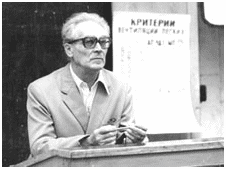The Buteyko Breathing Method
Breathwork at Alma Breath is based on the Buteyko Method. Here is some information about this system of breathwork.
An Introduction to the Buteyko Method
The Buteyko Method is a breathing technique designed to improve functional breathing patterns. While breathing is an involuntary activity, it is subject to change by stresses of everyday life, processed foods, excessive sitting and talking, lifestyle choices and environmental factors.
Functional breathing involves breathing in and out through the nose. The breath is light, regular, effortless with the primary movement from the diaphragm.
On the other hand poor breathing is generally upper chest breathing, often through the mouth. The symptoms most commonly reported by people with poor breathing patterns include the inability to take a satisfying breath, disproportionate breathlessness during rest or physical exercise, frequent yawning or sighing, or the feeling of not getting enough air. Irregular breathing is often a feature of poor breathing patterns. However, breathing patterns in these individuals can also be regular from time to time which makes detection difficult.
What does the Buteyko Method involve?
The Buteyko Method involves exercises to decongest the nose, switch to nasal breathing along with exercises to restore functional breathing patterns.
The application of the Buteyko Method is very direct and clients should experience notable improvements to their breathing and health within a few days. Expected benefits include easier breathing, deeper sleep, more energy, reduced asthma and nasal congestion along with increased feeling of calm. Exercises are simple and taught to all adults regardless of age or health and all children over five years of age.
Breathing patterns have a profound impact on health. Poor breathing patterns literally cause the airways to narrow, and blood circulation and oxygen delivery to be reduced.
How could my breathing be better?
Since breathing is a natural process and so vital to life, it begs the question: why do we all breathe so differently? The answer to this is that our breathing habits are greatly influenced by lifestyle, environment and genetic predisposition. The best way to understand how breathing patterns can be altered over time is to think of a person who has developed a habit of eating too much. In times of stress, this person may turn to emotional eating, using food as a crutch to help them relax. But if they continue eating in this way over a period of weeks or months, their body soon adapts to habitual over-eating and begins to demand more food than they need. Similarly, sitting at a desk, watching TV and playing video games, eating processed foods, excessive talking along with stress and anxiety are all factors influencing breathing. When the body is exposed to these perpetuating factors for extended periods of time, the body becomes accustomed to a larger volume of breathing, along with all its negative manifestations.
History of the Buteyko Method
The Buteyko Method first arrived to Australia from Russia in the early 1990s. Early on the method was popular with adults and children suffering from asthma. Over the past number of years, the Buteyko Method has shown to be efficacious in helping improve a number of breathing related problems.
- Respiratory: asthma, rhinitis, hayfever
- Neurological: Anxiety, stress and panic attacks
- Childhood development: dental health,craniofacial development and ADHD
- Sleep disordered breathing: insomnia, snoring, central sleep apnea, obstructive sleep apnea
Who is Buteyko?
Dr Konstantin Pavlovich Buteyko (Bhew-tae-ko) developed the method in 1952. This extraordinary man devoted his life to studying the human organism and made one of the most profound discoveries in the history of medicine.
Buteyko commenced his medical training in Russia in 1946 at the First Medical Institute of Moscow. Part of one of his practical assignments involved monitoring the breathing of terminally ill patients prior to death. After hundreds of hours spent observing and recording breathing patterns, he was able to predict with accuracy, often to the minute, the time of death of each patient. Each patient’s breathing increased as their condition deteriorated and as they approached death.
While at University Buteyko was diagnosed as suffering from malignant hypertension, a fatal form of blood pressure which gave him life expectancy of just 12 months. After majoring in clinical therapy, he began to wonder whether the cause of his condition, which was going from bad to worse, might be his deep breathing. He checked this by reducing his breathing. Within minutes his headache, the pain in his right kidney and his heartache ceased. To confirm his discovery, he took five deep breaths and the pain returned. He again reversed his deep breathing and the pain disappeared.
He did not appreciate it at the time, but this was one of the greatest, although as yet largely unacknowledged, medical discoveries of the twentieth century. Buteyko established that breathing, so vital in sustaining life, can be not alone the cure but also, amazingly, the cause of so many of diseases of civilisation.

Buteyko measured the breathing patterns of patients suffering from asthma, but he also included in his research sufferers from other ailments and found in many cases that they too hyperventilated between attacks. He devised a programme to measure breathing and also a method of reconditioning patients’ breathing to normal levels. This involved:
- Switching from mouth breathing to nasal breathing.
- Relaxation of the diaphragm until an air shortage is felt.
- Small lifestyle changes are necessary to assist with this, thus commencing the road to full recovery.
Alma Breath's breathwork practice is based on the Buteyko Method and the teachings of Dr Buteyko. To book a private consultation with Allison to explore how breathing exercises may benefit you, click on the button below.